The Royal Air Force has once again been called into action as British fighter jets intercept a group of Russian military aircraft off the coast of Scotland.
RAF Quick Reaction Alert (QRA) Typhoon fighters, based at RAF Lossiemouth in Scotland, were scrambled to intercept and escort Russian aircraft.
We are awaiting official confirmation from the Ministry of Defence.
The supporting tanker was first observed after 11am.
Active QRA ongoing off the coast of Scotland. A Voyager tanker is squawking '1321' a code for NATO Air Policing tasks like Quick Reaction Alert to intercept unresponsive aircraft, likely Russian. The tanker is understood to be supporting Typhoon jets from RAF Lossiemouth. pic.twitter.com/VBnkaKtsju
— George Allison (@geoallison) April 30, 2023
The Voyager tanker was still up supporting the Typhoon jets at 1:30pm.
Open-source intelligence accounts have identified the type of aircraft involved.
Russian Navy Maritime patrol aircraft Morse and voice net active. Morse net Ground control 8821 Kilohertz CW. Aircraft Morse 8830 Kilohertz CW. Voice net active on 6689 Kilohertz USB. Aircraft, likely Tu-142 Bear Fs sending long radiograms using Morse and voice.
— TJ (@te3ej) April 30, 2023
The Tupolev Tu-142 (NATO reporting name: Bear-F/J) is a long-range, maritime patrol and anti-submarine warfare (ASW) aircraft developed by the Soviet Union in the 1960s. It is a derivative of the Tu-95 ‘Bear’ strategic bomber and shares many similarities with its predecessor. The Tu-142 has been in service with the Soviet and later, the Russian Navy since the late 1960s.
How does Quick Reaction Alert tasking work?
According to the RAF website, the National Air Defence Operations Centre (NADOC) at RAF Air Command, High Wycombe collates information from radar sites across the UK and from civilian air traffic and intelligence agencies.
“They decide the threat is sufficient to scramble Typhoon jets and pass the order to to the Control and Reporting Centres (CRCs) at RAF Scampton and RAF Boulmer. The CRCs have direct contact with the pilots at RAF Lossiemouth and pass on the scramble message. Pilots at RAF Coningsby are ordered to standby in the cockpits of their Typhoons. RAF Coningsby is the second QRA station in the UK.”
Essentially, the jets and their crews are at a moments notice to launch and intercept unresponsive or dangerous aircraft.
Why does the UK intercept aircraft outside of its own airspace?
Andy Netherwood, a former Royal Air Force pilot, explained why this is done.
“A country’s sovereign airspace extends 12 miles beyond its coastline, sitting above its territorial waters. However, there are 3 main reasons why unknown or potentially hostile aircraft must be intercepted before they reach this point.”
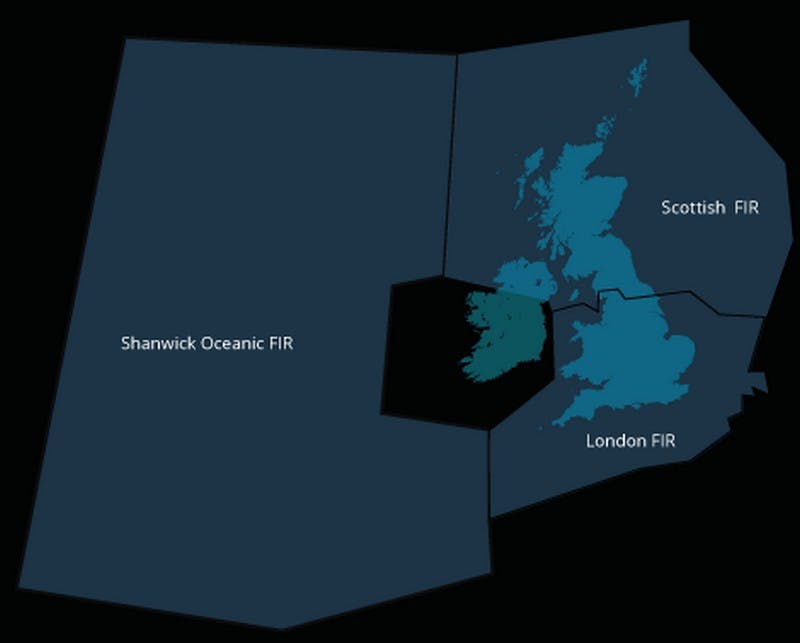
“The first is flight safety. Whilst sovereign airspace only extends 12 miles from the coastline, countries are responsible for ensuring the safety of civil aviation, including the provision of ATC services, within areas known as Flight Information Regions or FIRs. These extend well beyond the 12-mile limit. Russian long range aviation often transits the London and Scottish FIRs without filing a flight plan, talking to ATC or ‘squawking’ (operating their transponders). This makes them effectively invisible to civilian ATC and is very dangerous as airliners are also flying through this airspace. By shadowing Russian aircraft, the intercepting aircraft can show ATC where they are, allowing controllers to move airliners safely out of the way.
The second reason is because of the speed at which aircraft travel. An aircraft flying at 600 knots will travel 12 miles in little over a minute. Waiting until an unknown or hostile aircraft has entered sovereign airspace before intercepting is too late. It leaves insufficient time to safely carry out the intercept, visually identify the aircraft, provide all the required information back to decision-makers, and carry out any necessary action. Russian aircraft will normally be intercepted by the Norwegian Air Force and then handed over to RAF aircraft ensuring they are continually shadowed.”

“The final reason is to demonstrate capability and intent. One of the reasons Russia carries out these exercises is to test NATO and the UK. A failure to intercept would be interpreted as weakness and encourage further probing.”
For more on why the RAF intercept aircraft around the UK, you can read the full piece.
This happens often, doesn’t it?
No doubt you’ve probably noticed dozens of comments on our Facebook page saying something like, ‘nothing new’ or ‘This happens all the time it isnot news!’.
While this is a common occurence, we believe that its important for the public to know that. After all, if it isn’t reported frequently, how are people to know it’s a frequent occurence and not something to worry about?


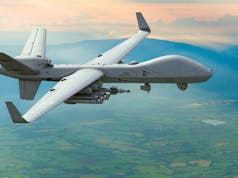
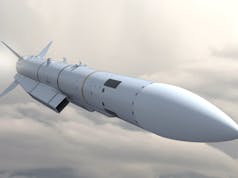

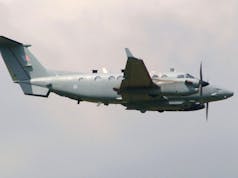

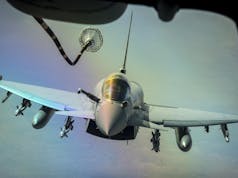





Those old Bears must be some pretty warn out old airframes..it’s not like they are underused.
Very old birds , newest must be a minimum of at least 3 decades old.
Noisy birds too, you can here them from miles away at sea.
Very safe service record though with only one crashing.
Agree with that, they like the B-52 just seem to go on forever!
Still an important LR asset for the Russians too, although it must be due for replacement in the not to distant future?
No sign of a replacement on the horizon, but then production only finished in 1994 so much younger than the B-52 but as you say, likely to go on forever, or 10 years plus as, just with the B-52, the avionics and mission payloads are kept up to date. There are also some Tu-95M in storage that could be converted into Tu-142s.
There is much more discussion as to what will replace the Il-38 and will that aircraft stay with props, similar to an updated P-3, or go P-8 alike.
There was talk of using Tu204 frame as possible replacment but that was 12 months or so i read this and not sure if that plan go ahead or not
The IL -38 is some two decades older then the Bears, so in need of a replacement more urgently I would imagine.
I remember them firing up at Fairford years back, absolutely deafening roar!
Can u hear aircraft while deep under water in a submarine from far away?
the TU142 was developed from the TU95 and then I think the TU142 wider fuselage was used to make the 1980s TU95M6/16.
Who knows if we will ever see a replacement as big as the TU142
A better phrase would be ‘detect’ them, on some of the sensors onboard. It’s the rotational rate of the propellors (drone) that is detected. The same is true of all propellor driven aircraft including helicopters (P3/C130/Merlin etc). Whereas with jet aircraft you only hear/detect them as they literally fly overhead.
That is interesting, so is that a meaningful advantage for something like the P-8 over a turbo prop like the P-3 ?
Counter-detectionwise yes, jet turbines operate at very high rpm, the noise is much higher in the frequency spectrum – equates to a much shorter detection range. They also exhibit slightly different characteristics in as much as it’s a more general noise as opposed to the discreet frequency of a turboprop.
However, P-8s unlike the old Nimbats arent really designed to operate low down in the weeds so to speak.
Brings its own problems when laying a pattern of buoys or dropping a weapon, hence the glide kit for the torpedoes.
Was that while submerged mate?
Sorry, just read your reply further down.
Yes mate, whilst deep.
Always reminds me of this (Link)
😆 What a time line of new fighter types.
Oh, I thought you might ref. B52s 😉
Aircraft of this age pre computer design had so much redundancy built into the airframe they could possibly fly forever. The stopper are lack of spares.
It did occur to me that with the tempo of Russian Airforce operations in Ukraine, they must be burning through airframe hours before maintenance cycles, considering Russian aircraft require considerable maintenance, particularly engines, with relitivly short overhaul periods.
I would think they will start seeing a drop off re availability quite soon…
Who intercepts them over Irish Republics waters
The RAF, if it needs to.
Mildly surprised they are still using morse code from aircraft. Went out in western forces many years ago. Still, as we in the morse fraternity used to say – whatever the distance or conditions, morse (CW) will always get through. Given those frequencies, I wish I’d kept my old receiver. Though I wouldn’t be able to read Russian morse code. Some old mates of mine would, however…
So it’s a very slow day in Scotland…. Good Lord
And yet if George had not posted this I for one would have been unaware a QRA was underway. So what is the issue? Ah, yes, you.
Must be an even slower day in your trailer park.
Slow! Not as slow as your laundry skills, hurry up and finish Support Companies sheets, you need to get them dry quick or it’s naughty corner for you again, wearing those clothes…yes THOSE clothes….
The photo of the Bear over Scotland has varied little over time, but many of us have seen it closely watched by Lightnings, Phantoms, Tornado ADV’s and Typhoons over a period of around 60 years!
Really noisy with those contra rotating props. Reminds of the RAF/SAAF Shackeltons.😋
Morning Klonkie😀 Ya, sons of Lancaster and another iconic sound along with the Harvard and the Vulcan howl!
cheers Mate!
Cheers my friend.
That’s the reds ,keeping us on our toes
Why dont we get a dozen or so special long range intruders of our own. Use the A 400 M as the basis, maybe with a slimmed down fuselage. If NATO thought about it they would be extremely useful L/R Maritime patrol a/c etc.
RC135, SR71 ( until it was withdrawn ) and it’s still classified replacement/s.